Woven Wonders: The Exquisite Textiles of Rann Utsav
Rann Utsav is a joyous celebration of culture, art, and heritage in the heart of Gujarat. And its rich and diverse textile traditions have been thriving for centuries. These textiles are more than pieces of clothing or decoration. They are works of art that reflect the region's stories, history, and identity. In this blog post, we take a closer look at some of the textile traditions of Rann Utsav. We will explore their history, techniques, and cultural significance. We will meet the artisans and cultural custodians that keep these traditions alive. So let the vibrant hues and intricate patterns emerge and fill you with wonder.
Kutch Embroidery: Stitching Stories of Heritage
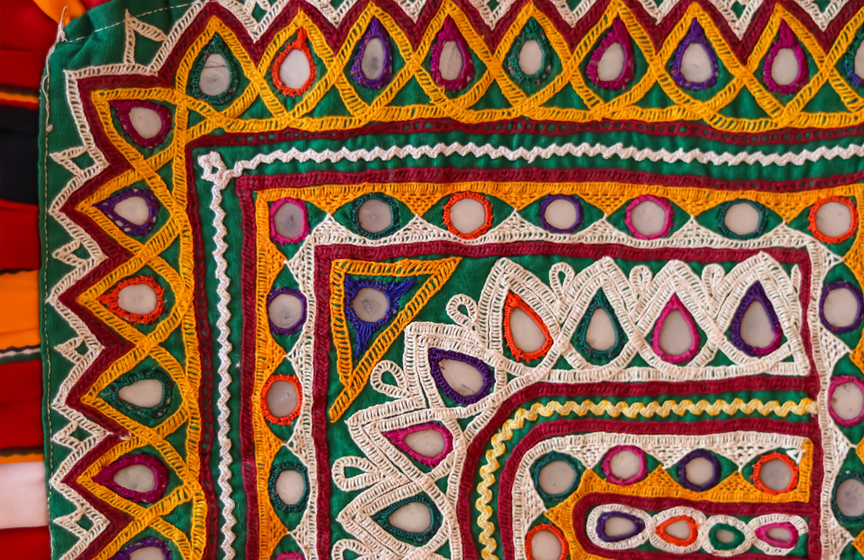
Kutch embroidery is a traditional art form from the Kutch region of Gujarat. It is intricate in its stitches and vibrant motifs, reflecting the region's heritage. Women do the embroidery, often learning their skills from their mothers and grandmothers. Motifs vary between regions, featuring geometric designs, nature and folk tales.
Kutch embroidery decorates clothing, home décor items, and religious objects. It is a prized art form, and it is a symbol of the region's cultural identity. The history of Kutch embroidery dates back to the 17th century. The art form passed through generations, leading to continued practice to date. But it is facing some challenges due to the decline in demand for handmade textiles. Despite these challenges, efforts are underway to preserve and promote Kutch embroidery. The art form is a significant part of the region's cultural heritage. And people hope to practise it for many years to come.
Bandhani: The Timeless Art of Tie-Dye
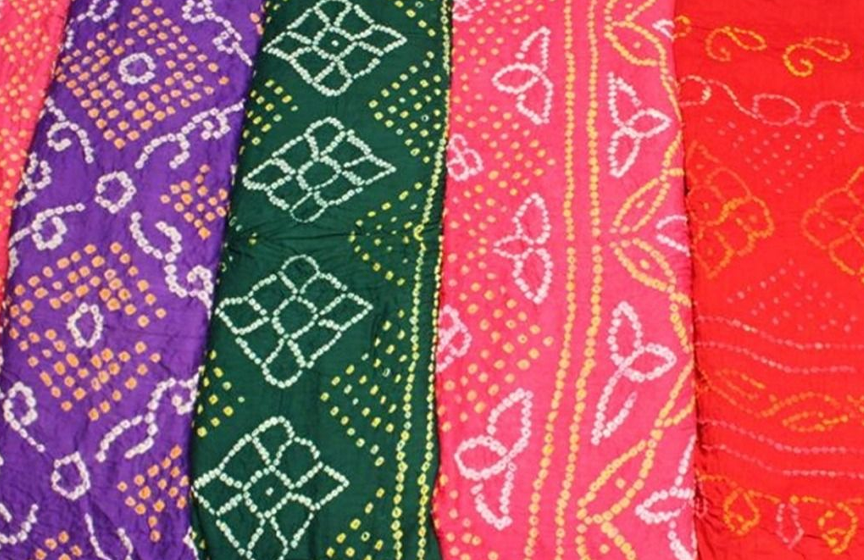
Bandhani is a traditional tie-dye technique; practised in Gujarat for centuries. The art form involves tying tiny knots on the fabric before dyeing it. So that it creates resist points that prevent the dye from reaching certain areas. The result is a vibrant and intricate pattern that is unique to Bandhani. The origins of Bandhani trace back to ancient times in the Kutch region of Gujarat. The patterns vary, but the most common ones are Leheriya, Bavan Baug, Mothda, Ekdali, and Shikari.
Bandhani is a labour-intensive process that requires great skill and patience. The artisans who practice Bandhani must have a keen eye for colour and pattern. And they must be able to tie the knots with precision. Artisans dye the fabric with natural or synthetic dyes, from vibrant reds and blues to softer pastels.
Ajrakh Printing: The Beauty of Block Prints
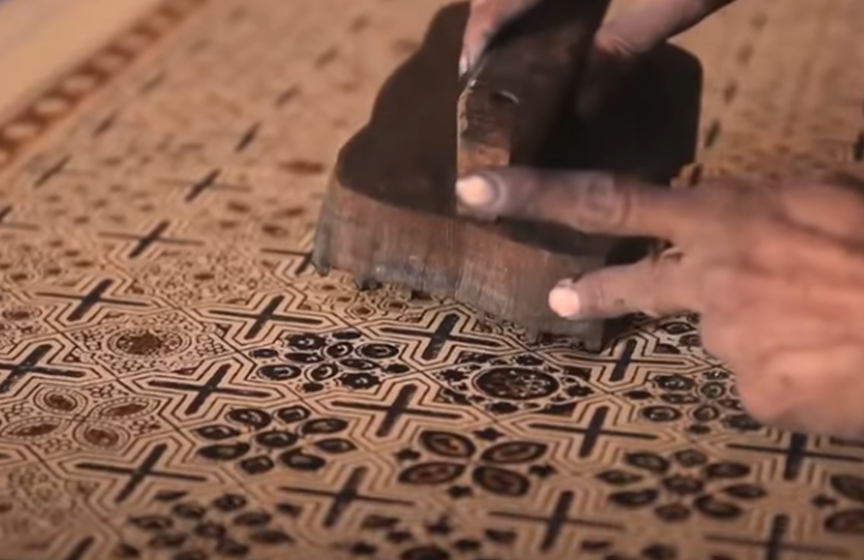
Ajrakh printing is a traditional textile art form from the Kutch and Sindh regions. It has prominent geometric patterns and uses natural dyes. Ajrakh printing begins with skilled artisans hand-carving wooden blocks with precision. They then dip the blocks in natural dyes extracted from plants and minerals. These include indigo, pomegranate, and madder root. The blocks are then stamped onto the fabric, creating intricate patterns. Ajrakh prints depict ancient symbols, motifs, and designs inspired by nature. The patterns hold spiritual significance and reflect the community's beliefs and values. Traditional Ajrakh designs include stars, flowers, geometric shapes, and interlocking patterns.
Beyond its aesthetic appeal, Ajrakh holds a profound cultural significance. The process of block printing itself is a communal effort. It involves artisans, dyers, and printers working together to create textile masterpieces. Knowledge and techniques are passed down within families, preserving the heritage. Ajrakh printing is ingenious and artistic. It is a centuries-old tradition in a fast-changing world.
Mirror Work: Reflecting Cultural Brilliance
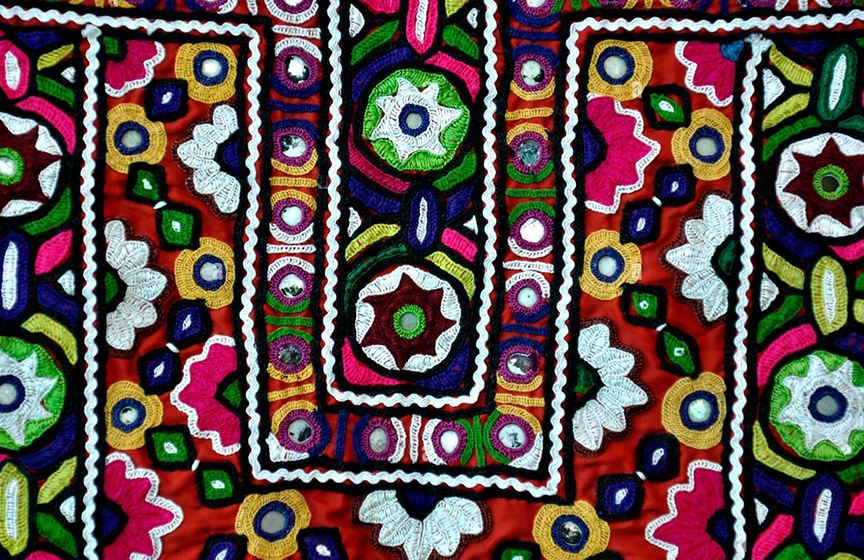
Mirror Work is a textile art form that involves placing small mirrors onto fabric. The art form has a long history and originated in the regions of Gujarat and Rajasthan. The mirrors used in Mirror Work serve more than a decorative purpose. They symbolize a connection to spirituality and ward off evil spirits. As individuals wear the fabric during celebrations, the mirrors reflect negative energy away.
Mirror Work is a living tradition that has evolved and changed over time. As new generations of artisans take up the craft, they bring their interpretations to the art. This dynamism ensures that Mirror Work will remain a relevant art form for many years.
Rogan Art: the Mystique of Textile Painting
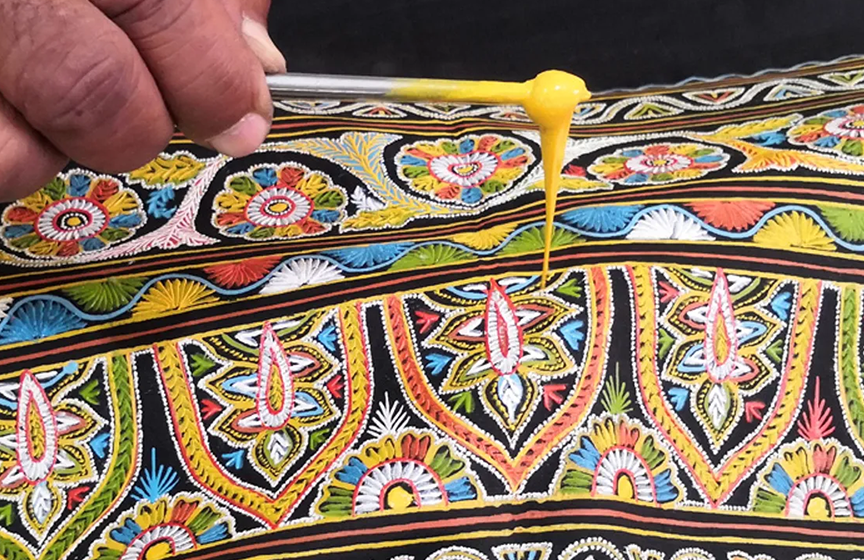
Rogan art is a textile art form that originated in the Kutch region of Gujarat. The art form uses vibrant, oil-based colours. Rogan art begins with the artist using a metal rod to transfer molten Rogan oil onto the fabric. The oil comes from castor beans and is mixed with natural pigments to create a rich palette of colours. The artist then uses a fine-pointed needle or stick to shape and manipulate the oil into designs.
Rogan art creates wall hangings, cushion covers, stoles, and sarees. The art form's versatility allows it to adorn personal and household items. It is elegant and charming. The art of Rogan is time-consuming, requiring immense patience and precision. Only a select few artisans of the art form exist. They have inherited the knowledge and techniques from their ancestors. Colour mixing, temperature control, and balancing fluidity are the skills learnt.
